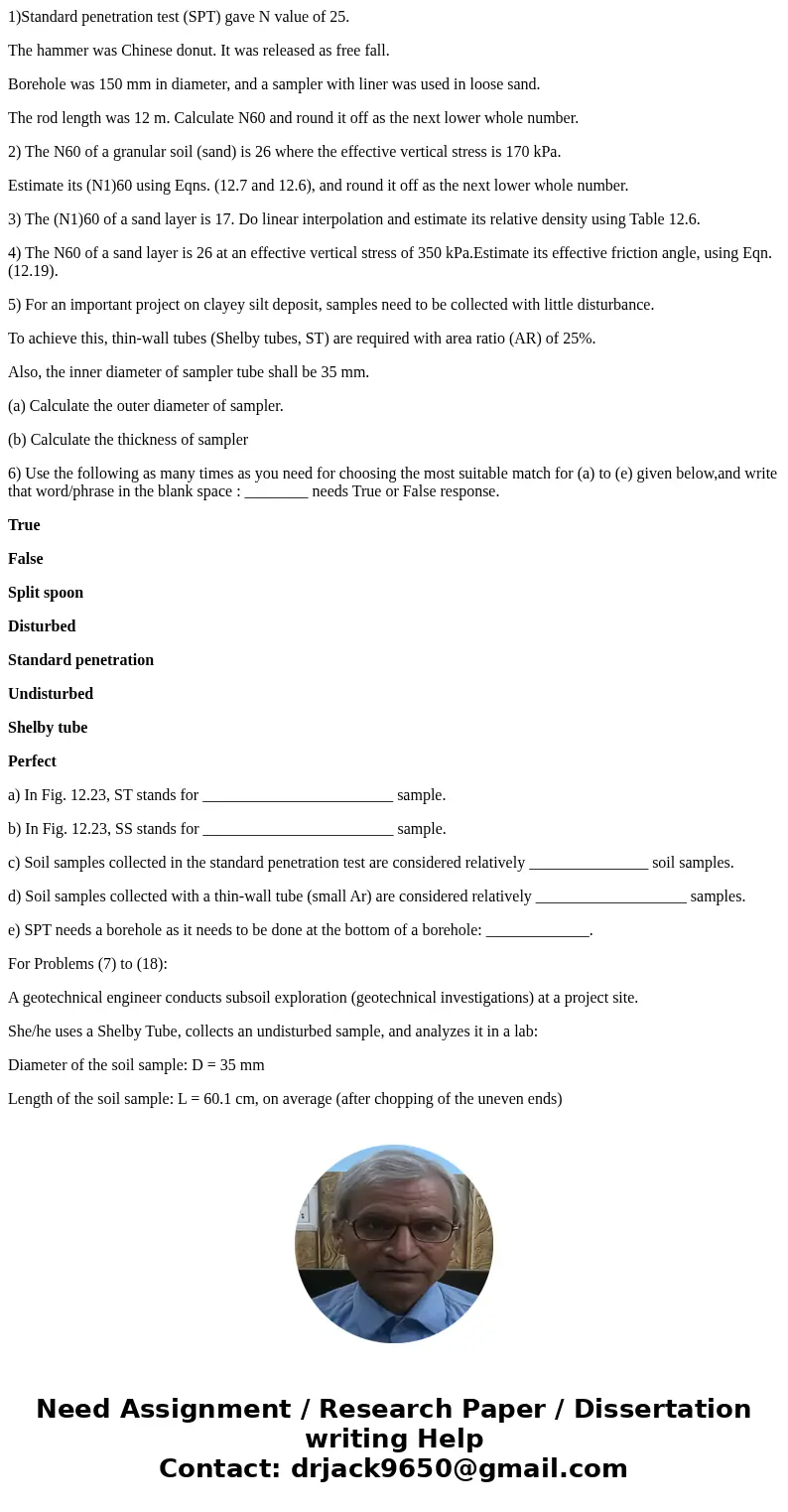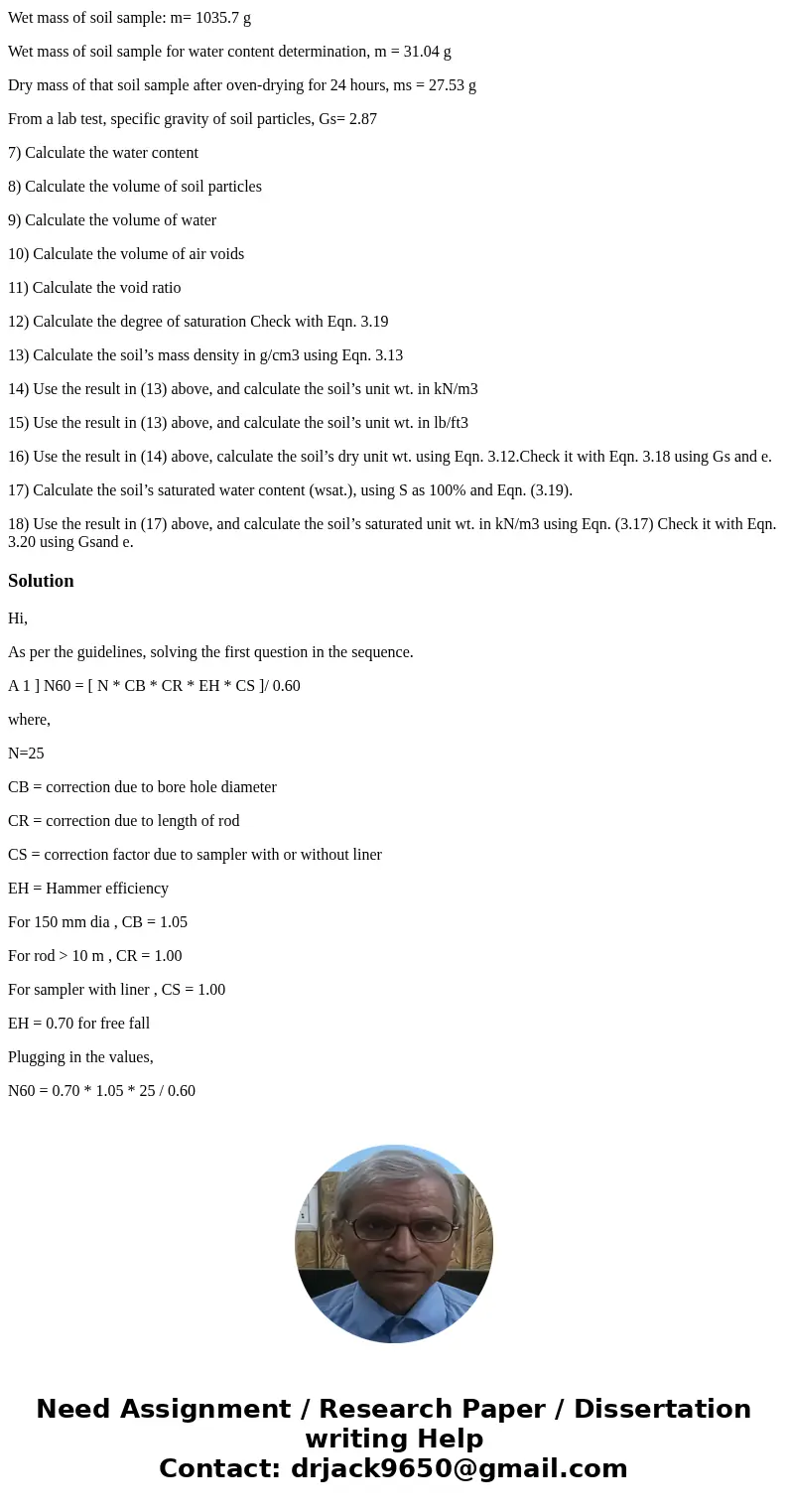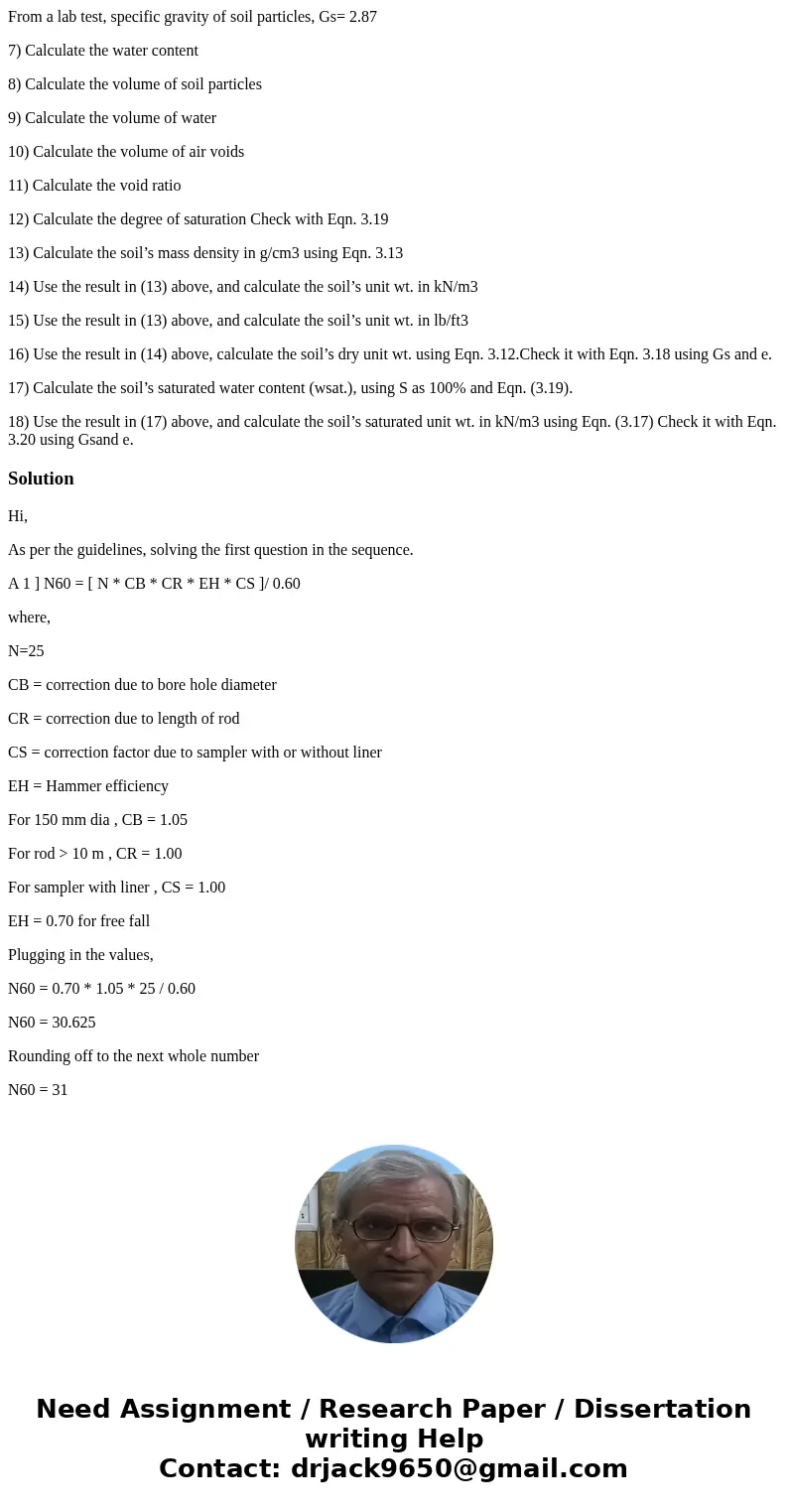1Standard penetration test SPT gave N value of 25 The hammer
1)Standard penetration test (SPT) gave N value of 25.
The hammer was Chinese donut. It was released as free fall.
Borehole was 150 mm in diameter, and a sampler with liner was used in loose sand.
The rod length was 12 m. Calculate N60 and round it off as the next lower whole number.
2) The N60 of a granular soil (sand) is 26 where the effective vertical stress is 170 kPa.
Estimate its (N1)60 using Eqns. (12.7 and 12.6), and round it off as the next lower whole number.
3) The (N1)60 of a sand layer is 17. Do linear interpolation and estimate its relative density using Table 12.6.
4) The N60 of a sand layer is 26 at an effective vertical stress of 350 kPa.Estimate its effective friction angle, using Eqn. (12.19).
5) For an important project on clayey silt deposit, samples need to be collected with little disturbance.
To achieve this, thin-wall tubes (Shelby tubes, ST) are required with area ratio (AR) of 25%.
Also, the inner diameter of sampler tube shall be 35 mm.
(a) Calculate the outer diameter of sampler.
(b) Calculate the thickness of sampler
6) Use the following as many times as you need for choosing the most suitable match for (a) to (e) given below,and write that word/phrase in the blank space : ________ needs True or False response.
True
False
Split spoon
Disturbed
Standard penetration
Undisturbed
Shelby tube
Perfect
a) In Fig. 12.23, ST stands for ________________________ sample.
b) In Fig. 12.23, SS stands for ________________________ sample.
c) Soil samples collected in the standard penetration test are considered relatively _______________ soil samples.
d) Soil samples collected with a thin-wall tube (small Ar) are considered relatively ___________________ samples.
e) SPT needs a borehole as it needs to be done at the bottom of a borehole: _____________.
For Problems (7) to (18):
A geotechnical engineer conducts subsoil exploration (geotechnical investigations) at a project site.
She/he uses a Shelby Tube, collects an undisturbed sample, and analyzes it in a lab:
Diameter of the soil sample: D = 35 mm
Length of the soil sample: L = 60.1 cm, on average (after chopping of the uneven ends)
Wet mass of soil sample: m= 1035.7 g
Wet mass of soil sample for water content determination, m = 31.04 g
Dry mass of that soil sample after oven-drying for 24 hours, ms = 27.53 g
From a lab test, specific gravity of soil particles, Gs= 2.87
7) Calculate the water content
8) Calculate the volume of soil particles
9) Calculate the volume of water
10) Calculate the volume of air voids
11) Calculate the void ratio
12) Calculate the degree of saturation Check with Eqn. 3.19
13) Calculate the soil’s mass density in g/cm3 using Eqn. 3.13
14) Use the result in (13) above, and calculate the soil’s unit wt. in kN/m3
15) Use the result in (13) above, and calculate the soil’s unit wt. in lb/ft3
16) Use the result in (14) above, calculate the soil’s dry unit wt. using Eqn. 3.12.Check it with Eqn. 3.18 using Gs and e.
17) Calculate the soil’s saturated water content (wsat.), using S as 100% and Eqn. (3.19).
18) Use the result in (17) above, and calculate the soil’s saturated unit wt. in kN/m3 using Eqn. (3.17) Check it with Eqn. 3.20 using Gsand e.
Solution
Hi,
As per the guidelines, solving the first question in the sequence.
A 1 ] N60 = [ N * CB * CR * EH * CS ]/ 0.60
where,
N=25
CB = correction due to bore hole diameter
CR = correction due to length of rod
CS = correction factor due to sampler with or without liner
EH = Hammer efficiency
For 150 mm dia , CB = 1.05
For rod > 10 m , CR = 1.00
For sampler with liner , CS = 1.00
EH = 0.70 for free fall
Plugging in the values,
N60 = 0.70 * 1.05 * 25 / 0.60
N60 = 30.625
Rounding off to the next whole number
N60 = 31



 Homework Sourse
Homework Sourse